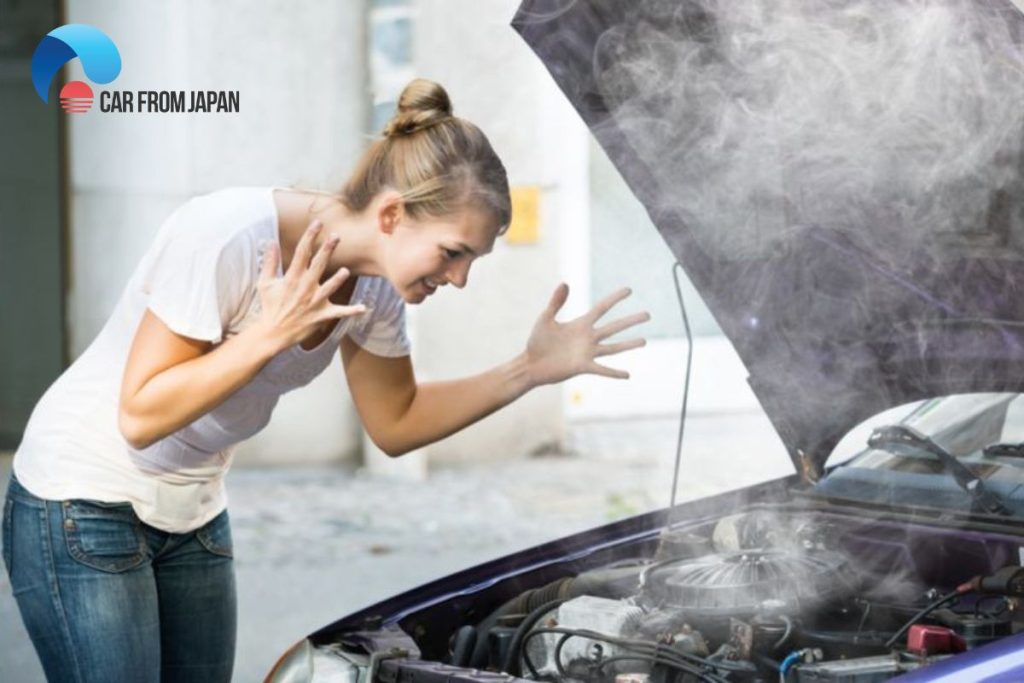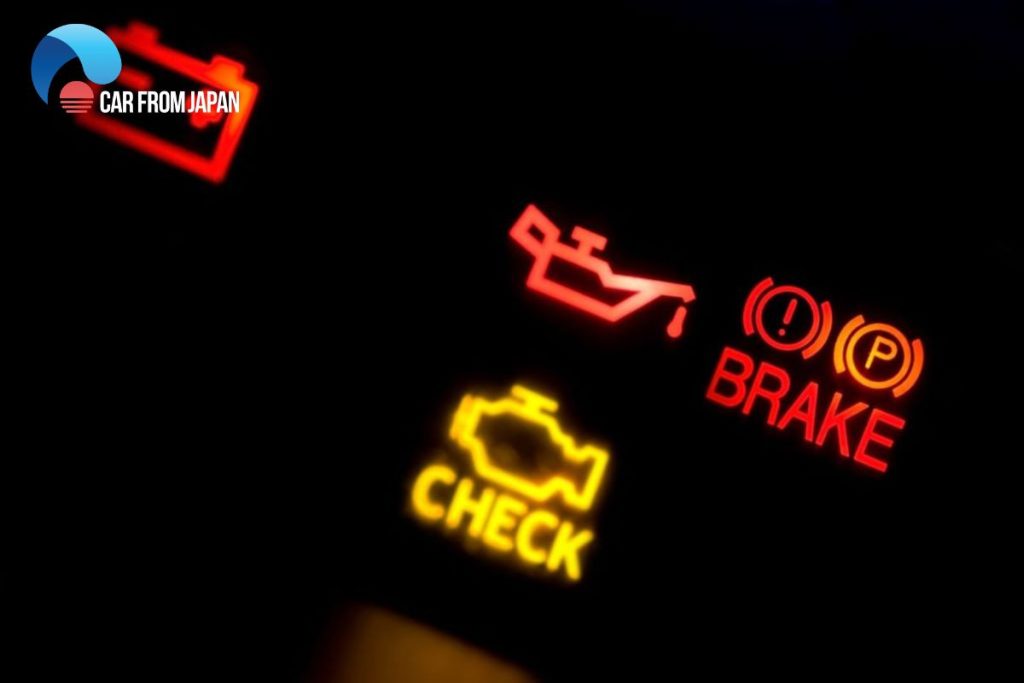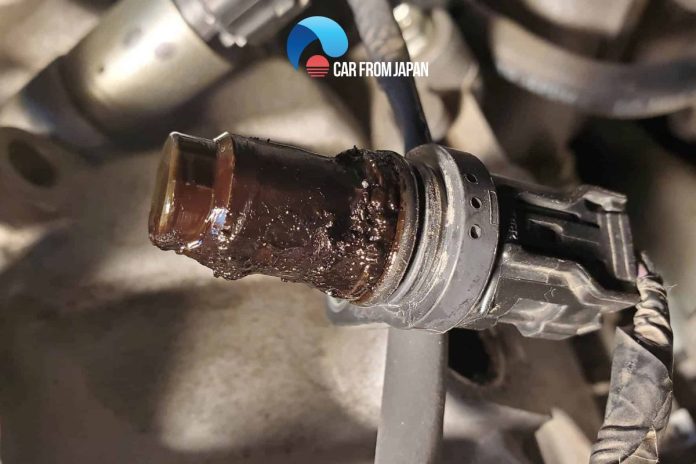The oil control valve (OCV) plays a critical role in engines equipped with Variable Valve Timing (VVT). It manages the flow of oil to the camshaft, which is essential for proper engine operation and performance.
A functioning OCV contributes to several key benefits, including improved fuel efficiency, reduced emissions, and smoother engine performance.
However, like any component, the OCV can fail, leading to various engine problems. This article provides a clear overview of the OCV’s role in your engine and explains the common warning signs that indicate a potential problem!
Contents
What Exactly Does an Oil Control Valve Do?
The oil control valve, sometimes called the engine oil solenoid valve, is a small but vital component controlled by the engine control module (ECM) or powertrain control module (PCM).
Its primary function is to regulate the flow of oil to the engine’s camshaft. The camshaft controls the opening and closing of the engine’s valves, and proper lubrication is essential for its smooth operation and longevity.
The OCV acts like a gatekeeper, precisely controlling the amount and timing of oil flow to the camshaft.
It opens and closes based on signals from the ECM/PCM, which constantly monitors engine performance and adjusts the OCV’s operation to meet the engine’s demands.
If the camshaft doesn’t receive the correct amount of oil at the right time, it can lead to performance issues and potentially damage the engine.
What Are Bad Oil Control Valve Symptoms?
There are certain symptoms, which need immediate attention for repair, and smooth functioning of the oil control valve. Some of them include.
Poor fuel economy
This means the oil control valves are unable to regulate the oil flow in the system. Thus, causing the engine to over-perform and use more oil.
Moreover, the exhaust valves would also open and close at the wrong time, which in turn would lead to more expenditure on gas.
Eventually, it would also damage the other internal components of the engine alongside drastically reducing the fuel economy.

Slow acceleration
The defect in oil usage settings would directly affect the performance of the car’s acceleration. One can check for this, by accelerating the car and noting the time taken to reach the desired speed.
In simple words, if the car is unable to reach a 60km/h speed in a short time, then it’s a sign of disturbance in the oil control valve.
Ineffective engine
For ensuring the flawless and superlative oil control valve, one must consider the variable valve timing system of the car.
It generates the power required by the vehicle, which activates automatically when the RPM is higher than the normal. Even when the load on the car is more, especially on the upper hill road, it stimulates.
In this regard, if the Variable Valve Timing (VVT) Solenoid is impaired, it can bring fluctuation in the revolutions thus, reducing the power of the vehicle.
Now, the question arises why this happens? Well, the main cause of damaged oil control valve is not replacing the oil timely. This negligence can cause impurity, leading to blockage and subsequently, preventing the oil from entering into the camshaft.
Now, it must be easier to detect the malfunctioning of the vehicle and work on its maintenance tips in order to prevent the large expenses.
Overheating engine
Keep in mind that the oil control valve does more than only regulate pressurized motor oil to adjust the camshafts’ position and angle.
Fresh oil is pumped through the valves, camshafts, solenoids, and many other component elements of a variable valve timing system when the oil control valves open.

By directing heat from these components into the oil pan, where it may be cooled, this creates a supplementary type of cooling (in addition to the coolant).
If and when the oil control valves malfunction, it may prevent oil from getting to these parts, raising the temperature of the engine and increasing component wear.
Rough idle
Under typical circumstances, the VVT system operates at higher RPMs or while under stress, such as going up a hill.
Excess engine oil may be injected into the VVT system by a defective oil control valve or VVT solenoid, resulting in rough idling, stalling, or just poor engine performance in general.
Check Engine Light on
The check engine light will invariably illuminate if there is something wrong with the oil control valve. The onboard diagnostic system (OBD2) will generate a code.
This code will tell you whether the issues you’re experiencing are due to the OCV and its associated VVT solenoid. DTC P0008, P0014, and P0017 are all VVT-related codes.
As with all Check engine light ‘on’ occurrences, the car can be driven for a limited distance before being towed to a service specialist for repair.

What Are Causes For A Bad Oil Control Valve?
As instructed by the ECU, the VVT solenoid is electrically powered. The VVT solenoid might stop working if there is a problem with this system or its electrical wiring.
Additionally, the solenoid itself may experience an internal electrical problem and start to function only occasionally or not at all.
The OCV uses engine oil, which must be clean to operate properly. Sludge and/or varnishes (sticky deposits) may accumulate in this valve if regular oil and filter changes are not carried out as instructed in your owner’s handbook.
This pollution may delay or prevent its operation. Furthermore, despite the fact that this valve is quite basic, an internal mechanical breakdown might lead it to fail to work.
An inline oil screen before the valve oil input is used in many OCV setups. Dirt or sludge might partially or totally obstruct this screen. This obstruction can obstruct flow to the OCV, causing it to fail to work.
Again, clean oil is essential. Engine oil and filter replacements on a regular basis can help prevent this sort of failure.
Watch the video below to know how to replace oil control valve in Toyota cars!
What is The Oil Control Valve Replacement Cost?
So, you suspect your oil control valve is malfunctioning and needs to be replaced. What kind of expense are you looking at?
Unfortunately, you can’t usually just repair an oil control valve; replacement is typically the recommended solution.
In some vehicles, the oil control valve and the variable valve timing (VVT) solenoid are integrated into a single unit, meaning if the OCV fails, the entire assembly needs replacing.
How Much To Replace An Oil Control Valve?
The cost of a replacement oil control valve (including a VVT solenoid, if applicable) can range from $50 to $200 for the part itself.
Labor costs add another $50 to $200 to the total, bringing the overall expense to between $100 and $400. The exact price will depend significantly on your car’s make and model.
Luxury or high-performance vehicles that require specialized OCVs will typically be more expensive. The location of the OCV in your engine also affects labor costs; if it’s difficult to access, labor charges will likely be higher.
Beyond the OCV and VVT solenoid replacement, you might also incur these additional costs:
Diagnostics
A mechanic might charge $50 to $150 to diagnose the problem, often involving scanning for error codes and testing the OCV.
However, this diagnostic fee isn’t always necessary if you’re already certain the OCV is the culprit.
Oil Change and Filter Replacement
If your OCV failed due to dirty, old, or burnt oil, it’s a good idea to have your oil and oil filter changed at the same time.
This will help flush out any contaminants in the oil system and ensure your new OCV has a clean operating environment. An oil change typically costs between $40 and $150.
It’s always wise to get a few quotes from reputable mechanics before proceeding with the repair to ensure you’re getting a fair price.
FAQs About Oil Control Valve
Can you replace a faulty oil control valve yourself?
Yes, replacing an OCV is possible as a DIY project, but it requires some mechanical knowledge and the willingness to research your specific vehicle.
If you’re comfortable working on your car’s engine and are prepared to learn the necessary procedures, you can save money on labor costs.
Can i drive with a bad oil control valve?
While it’s technically possible to drive with a bad oil control valve (OCV) for a short time, it’s best to have it inspected and repaired promptly by a qualified mechanic.
Driving with a faulty OCV not only compromises performance and fuel economy but also risks more substantial engine damage in the long run.
It’s much more cost-effective to address the issue promptly than to face potentially extensive repairs later.
How long do oil control valves last?
An oil control valve typically lasts between 1 and 3 years depending on the quality of the valve and vehicle maintenance.
If if being properly cared for, it can last for the lifespan of the car.
Final Words
Understanding the function of the oil control valve and recognizing the symptoms of its malfunction to ensure safety.
You should be aware of the symptoms such as poor fuel economy, rough idling, decreased engine power, or illuminated check engine light.
Make sure to timely diagnose and repair or replace a faulty to avoid further engine damage and restore optimal vehicle performance!




Oil valve is not working on 08 eclipse spyder 2.4 motor has clatter in top end I can activate valve with scanner and motor sounds fine I’m at a loss any help please